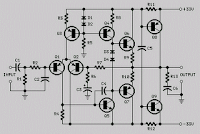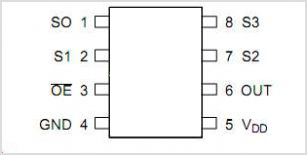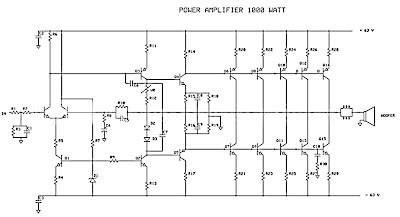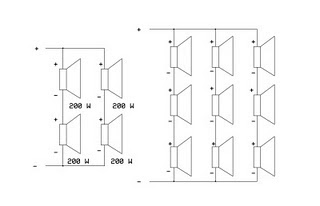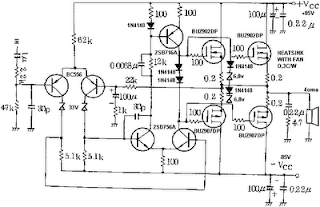This is yet some other mission born of necessity. Its a simple circuit, but does precisely what its designed to do - dim LED gentles or management the rate of 12V DC motors. The circuit makes use of PWM to regulate the effective or moderate current in the course of the LED array, 12V incandescent lamp (such as a automobile headlight bulb) or DC motor. The best distinction between the two modes of operation is the addition of an influence diode for motor speed control, even supposing a small diode will have to be used for dimmers too, in case long leads are used on the means to create an inductive back EMF when the MOSFET switches off.
hoto of Completed PWM Dimmer/Speed Control
The photograph presentations what a achieved board seems like. Dimensions are 53 x 37mm, so its imaginable to set up it into kind of small areas. The parts used are without difficulty to be had, and lots of subsitiutions are available for both the MOSFET and energy diode (the latter is only needed for motor speed management). The opamps will have to not be substituted, because the ones used have been chosen for low power and their capability to swing the output to the terrible supply rail. Note that if used as a motor velocity managementler, there is no remarks, so motor pace will change with load. For many softwares the place DC motors are used, steady speed in spite of load isn't needed or fascinating, but it's up to you to make a decision if this could risingly suit your wants.
Description
First, an outline of PWM is warranted. As the pot is circled clockwise, the input voltage modifications linearly with rotation. At first, the voltage is such that the comparator output is simply slim spikes, which turn the MOSFET on for an awfully quick period. Average current is low, so related LEDs will most probably be reasonably dim, or a motor will run (relatively) slowly. As the enter voltage coming from the pot increases, the MOSFET is on for lengthyer and lengthyer, so increasing energy to the burden.
figure 1 - PWM Waveform Generation
Figure 1 displays how the PWM idea works. The red trace is the triangle wave reference voltage, and the green trace is the voltage from the pot. When the input voltage is bigger than the reference voltage, the MOSFET activates, and current drifts within the load. Because the frequency is comparatively high (about 600Hz), we dont see any flicker from the LEDs, however the tone is audible from a motor thats PWM controlled. The PWM signal is proven in blue. The moderate present in the direction of the load will depend on the ratio of on-time to off-time, and when each are equal, the moderate present is exactly half of of that which would be drawn with DC.
Figure 2 - Dimmer/Speed Controller Schematic
The circuit is shown in Figure 2. U1 is the oscillator, and generates a triangular waveform. R4 and R5 simply set a half voltage reference, so the opamps can perform around a 6V centre voltage. U2A is an amplifier, and its output is a 10V top to peak triangle wave that's used by the comparator in line with U2B. This circuit evaluates the voltage from the pot with the triangle wave. If the input voltage is at zero, the comparators output remains low, and the MOSFET is off. This is the zero atmosphere. In truth, the reference triangle waveform is from at least about 1.5V to a maximum of 9.5V, so there's a small part at each and every end of the pots rotation the place nothing occurs.
This is commonplace and practical, due to the fact we would like a well defined off and most environment. Because of this vary, for lighting fixtures applications, an business standard zero-10V DC management sign can be used to set the mild stage. C-BUS (as smartly as many other home automation machines) can present 0-10V modules that may management the dimmer. While a 1N4004 diode is proven for D2, that is handiest appropriate if the unit is used as a dimmer. For motor pace management, a excessive-current quick recovery diode is required, this sort ofs a HFA15TB60PBF ultra-fast HEXFRED diode. There are many prospects for the diode, so you want to use whatever is without difficulty available that has appropriate scores. The diode should be rated for at least 1 of 2 the entire load present of the motor, and the HFA15TB60PBF urged is good for 15A continuous, so is adequateay with motors drawing as a lot as 30A.
Construction
While its unquestionably conceivable to build the dimmer on veroboard or identical, its somewhat fiddly to make and mistakes are easily made. Also, take no lengthyere that on account of the current the circuit can deal with, it may be very necessary use thick wires to give a boost to one of the crucial skinny tracks. This is even important for the PCB model. Naturally, I suggest the PCB, and this is to be had from ESP. The board is small - fifty three x 37mm, and it automobileries the entire skinnyg, together with the screw terminals. The PCB is double-sided with plated-through holes, and has solder maskss on both sides. The MOSFET will desire a heatsink except you are using the dimmer for light hundreds only. It is vital to insulate the MOSFET from the heatsink generally, for the explanation that case of the transistor is the drain (PWM output).
For use at excessive current and that which you can imagine excessive temperatures, the warmthsink may need to be higher than expected. Although the MOSFET must on the whole only dissipate about 2W or so at 10A, it's going to dissipate much more if its allowed to get scorching. Switching MOSFETs will cheerfully go into thermal runaway and self destruct if they have got inadequate heatsinking. You may also use an IGBT (insulated gate bipolar transistor) - most should have the identical pinouts, and they do no longer endure from the same thermal runaway drawback as MOSFETs. As noted above, there are rather a lot of different MOSFETs (or IGBTs) and fast diodes which are usable. The IRF540 MOSFET is a good choice, and being rated 27A it has a generous security margin. There are many differents that are equally suitable - in truth any switching MOSFET rated at 10A or more, and with a most voltage of more than 20V is quite adequate.
Testing
Connect to an appropriate 12V power supply. When powering up for the first time, use a one hundred ohm \"safety\" resisor in collection with the optimistic provide to limit the present if when you have made a mistake within the wiring. The complete present drain is about 2.5mA with the pot totally off, rising to 12.5mA when totally on. Most of this current is in the LED, which can also be fed from the PWM provide so you will see that the entire lot is working with no need to attach a load. Make sure that the pot is fully anti-clockwise (minimum), and apply power. You will have to measure not greater than 0.25V throughout the security resistor, rising to 1.25V with the pot at most. If adequate, do away with the safety resistor and install a load. High depth LED strip lights can draw up to ~1.5A each, and this dimmer should be capable of drive as so much as 10 of them, depending on the capabilities of the potential supply and the size of the warmthsink for the MOSFET.
source: http://sound.westhost.com/project126.htm



